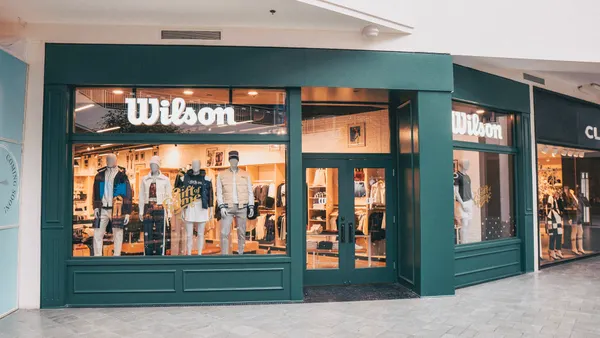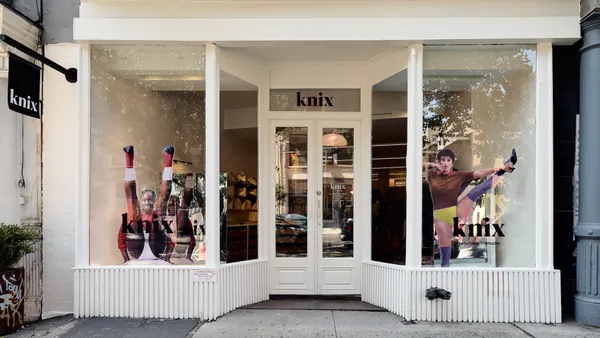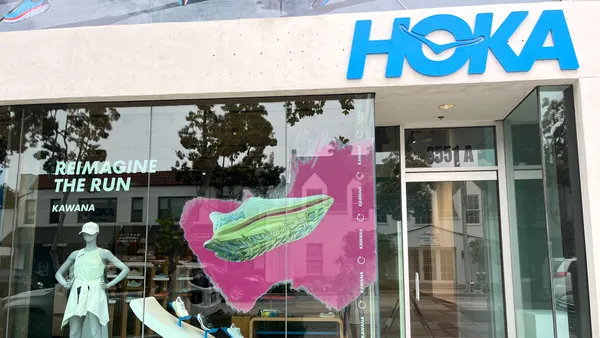Dive Brief:
- Retailers are coming off a strong holiday season — stronger than many predicted — but that won’t diminish the dismantling of brick-and-mortar retail that awaits some segments of the market, warns Jan Kniffen, CEO of consulting firm J. Rogers Kniffen Worldwide Enterprises, who spoke to CNBC on Wednesday.
- By several firms’ accounting, store closures approached 7,000 in the U.S. this year. That breaks a 20-year record, according to Kleiner Perkins Caulfield & Byers General Partner Mary Meeker’s June trends report. Year-to-date, store closure announcements in the U.S. increased 229% year over year to some 6,985, according to an FGRT reported emailed to Retail Dive. Some retailers, however, are opening stores, notes retail analyst Nick Egelanian, president of retail development consultants SiteWorks International.
- Whatever the exact number of closures, it's high, and e-commerce growth will continue to push that number higher, according to Kniffen. But Egelanian doesn’t agree that the ongoing shrinking of retail’s footprint has as much to do with online sales as Kniffen says. “E-commerce is the most recent detractor in brick-and-mortar retail, but by no means the most important,” Egelanian told Retail Dive in an email.
Dive Insight:
Consumer confidence is a touchy thing — driven by tangibles like employment, wages and spending power, and intangibles like the anticipation of employment and wage hikes (or tax breaks). In recent years, despite an increasingly healthy economy, consumer confidence has lagged behind wage and employment improvements, muting retailers’ holiday happiness.
This year was different. Holiday sales increased a record 4.9% this year, according to the latest Mastercard SpendingPulse report released Tuesday. It’s the largest year-over-year increase since 2011 and an indication of solid consumer confidence. E-commerce sales soared 18.1% over last year thanks in part to a late-season surge, according to the report, which details holiday sales from Nov. 1 through Dec. 24 across all payment types.
Neither result was that different nor unexpected, however, considering the economic backdrop, Egelanian says. "2017 retail sales results were pretty much as I expected. We are nearing the end of a now 10-year expansion and at near full employment, so it is not surprising that holiday sales were very strong," he told Retail Dive in an email. "The 5% year-over-year gains were great, at about a percent above the 4% annual retail sales growth rate seen in recent years."
Above all, he doesn't see online sales as forcing a new retail paradigm all on their own. "Internet sales grew disproportionately of course, but are likely to represent only about 9% of overall retail sales for 2017 as a whole, still below the 10.7% level achieved by catalogs in their heyday," he said.
That doesn’t mean that the closures Kniffen foresees won’t be happening in the new year, however. Macy's continues its planned closure of some 100 stores, and ailing specialty retailers like Toys R Us will move the needle on yet more. H&M, Ascena Retail Group, Toys R Us, J.C. Penney, and of course Sears have all announced closure plans that are likely to take place next year and beyond.
But each retailer has its reasons for opening or closing doors, and for department stores it's been a decades-long saga, according to Egelanian. Kniffen, CNBC notes, spent two decades as an executive at May Department Stores. It's department store executives, Egelanian says, who missed the boat years ago and may be missing it now by focusing too much on e-commerce.
“Department stores began losing departments to stand-alone discount ‘commodity’ retail formats starting in the 1970’s, with Toys R Us. The crippling trend has been steadily downward ever since,” he said. “Blaming department store woes on the internet, [misses] a 30- to 40-year pattern of store sales declines that began then.”
Today, he adds, department stores retain three departments — apparel, cosmetics and housewares — which also happen to be the categories embraced by retailers like TJ Maxx, Ross, Home Goods and Ulta Beauty. Unlike department stores, those players are all enjoying brisk sales and are adding stores to their portfolios.
“The fact is, that as the department store industry moved toward functional obsolescence, the ‘big box’ commodity retail portion of the industry, which has largely replaced department store sales, reached maturity by 2005 — leaving a slow-growth, mature retail industry in its wake,” according to Egelanian. “Now the combination, of department store obsolescence and big-box store growth maturity, is being confused with internet dominance — an utterly ridiculous conclusion given the reality that 91 cents of every retail sales dollar is spent in a brick and mortar store today.”













